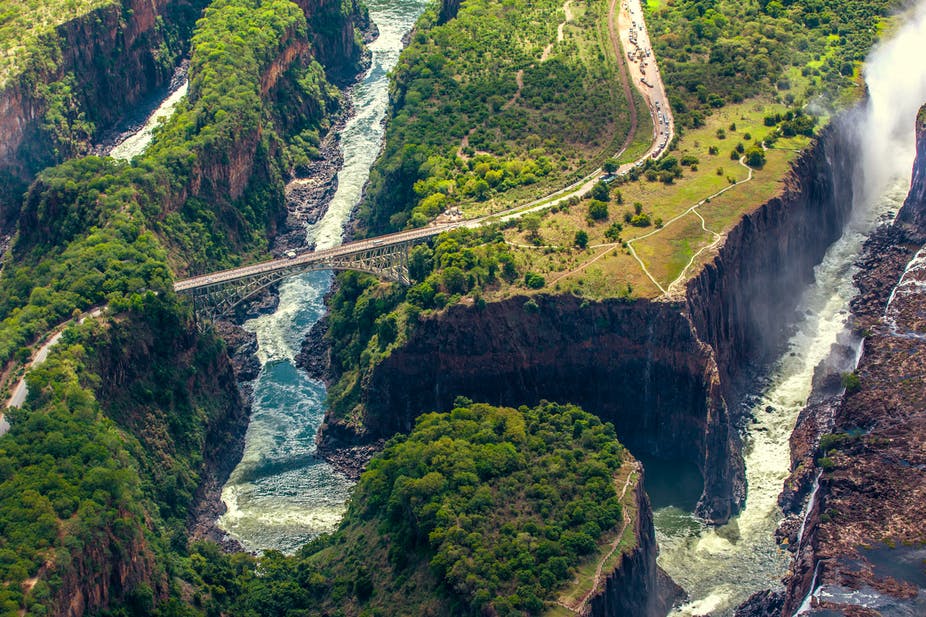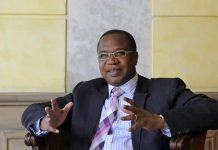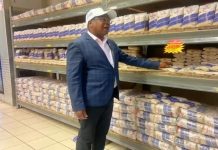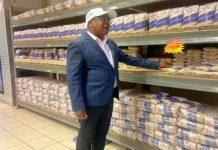Government wants to maintain stable exchange rates and increase the availability of fuel and electricity as part of efforts to achieve 3 percent economic growth this year.
Improving commodity prices for major exports, especially the gold price which rose to US$1 545,50 a troy ounce (just under US$50 a gramme) yesterday, are also primed to spur economic growth by boosting export earnings.
The exchange rate has achieved a high level of stability over the last 15 weeks since the start of October last year.
While agriculture may be affected by poor rains this season, the situation was unlikely to be worse than last year.
Finance and Economic Development Minister Professor Mthuli Ncube, in a wide ranging interview on Monday night, said funds have been set aside to ensure power imports.
He said plans were in place to license more independent power producers to generate electricity through solar and coal to end load-shedding.
Zimbabwe has endured load-shedding since last year after the regional drought reduced upper Zambezi flows, thus keeping water levels low in Kariba Dam, and decades-long failure to refurbish thermal power stations, especially the giant Hwange Thermal.
While efforts have been made to prioritise industry when rationing electricity, manufacturers have been forced to resort to expensive diesel and petrol generators more frequently than they desire.
Experts generally agree that improved fuel and power supplies will ease the transition to economic growth.
Said Prof Ncube: “In terms of prospects for this year, our expectation is that the economy will perform better than last year and we expect growth of 3 percent in terms of GDP growth. You have seen the forecast from the World Bank at 2,7 percent in terms of GDP growth and the IMF (International Monetary Fund) forecast is just below 2 percent. So there is some positive growth if one were to put all of those together, including our own 3 percent GDP growth rate.”
He hoped Zimbabwe will not experience shocks of the magnitude of Cyclone Idai, which devastated human lives, crops, livestock and infrastructure in Manicaland and Masvingo provinces. This piled pressure on Government to allocate more resources for the provision of food to afZimbabwe’s economic challenges are numerous, but one of the most pressing is electricity scarcity. Around 40% of the country’s population has access to electricity.
The country has access to vast and diverse possible energy resources. These include about 12 billion metric tonnes of coal, hydro power potential concentrated along the Zambezi River and untapped solar power potential.
This is not peculiar to Zimbabwe. In the Democratic Republic of Congo, for example, only 16% of the population has access to electricity. Yet the country could meet much of the entire region’s demand for electricity through the hydro power generation and diversification of renewable energy sources in the country.
I conducted research to establish what the panacea could be for electricity scarcity in Zimbabwe. My conclusion was that the vaunted argument of increasing generation capacity is inadequate. This is because the technological interventions don’t address the distribution concerns.
My study shows that the supply view is only a partial response to the problem. Access to electricity is in fact dependent on socio-economic and political factors. As I argue in my study, the real problems getting in the way of access to electricity are social, political and economic.
These structural factors reproduce electricity social scarcity, which in turn perpetuates social injustice. This is because electricity is essential for development.
What this shows is that policy choices and affordability need to be addressed if the electricity shortage is to be resolved.
Energy mix
Currently, Zimbabwe produces 1,100 megawatts of electricity against a national demand of 1,500 megawatts. It generates power from water and coal, and also imports electricity.
The major source of hydro power for Zimbabwe is the Kariba Dam, which has an estimated capacity of 1,050 megawatts.
Coal-fired power stations produce about 70% of the country’s energy. But the Hwange Coal Power Station is affected by inadequate financial resources for infrastructure and equipment maintenance, leading to supply disruptions.
To make up for the shortfall, Zimbabwe relies on imports from South Africa’s electricity public utility, Eskom, and from Mozambique.
Even if renewable energy were to be added into the energy mix, the supply mix could increase the cost of production, which would then be passed on to the end users.
Factors that drive disparity
There is an urban advantage in Zimbabwe’s energy profile, as is the case across much of Africa. The overwhelming bulk of the region’s electricity grid is concentrated in urban areas, while the vast majority of the population living without electricity is in the rural and peri-urban areas.
According to the Zimbabwe national energy policy report of 2012, 83% of urban households have access to electricity compared with 13% in rural areas. Rural communities meet 94% of their cooking energy requirements from traditional fuels, mainly fuelwood. Wood is the main cooking fuel for 20% of urban households.
No newer reliable data are available, but these trends are likely to have got worse rather than better in the past seven years.
Coal, charcoal and liquefied petroleum gas are used by less than 1% of urban households. The electrification rate in the rural areas is approximately 10%. Connection to the electricity grid is highly unequal.
Households’ poverty status adds to the disparity in access. A 2017 Poverty, Income, Consumption and Expenditure Survey found that extreme poverty was much higher in rural areas. Over 40% of the rural population was extremely poor compared to 4.4% in urban areas.
Poor people have borne the brunt of hyperinflation, which has affected the price of fuel. For example, the price of cooking gas has increased more than six-fold since the start of 2019.
At the same time the electricity tariff has soared by 320%, placing it beyond the reach of many, particularly the poor.
ected areas, and other parts of Zimbabwe that did not get good harvests from the prior cropping season. We are hopeful that God will smile at us and we don’t get another cyclone.”






